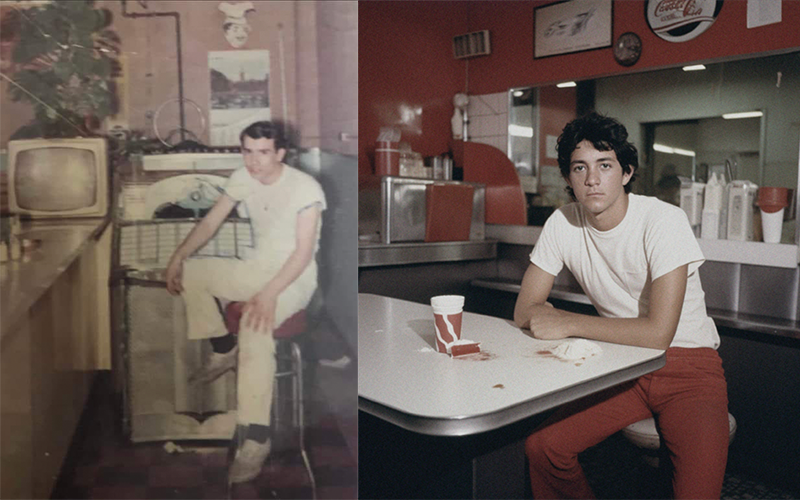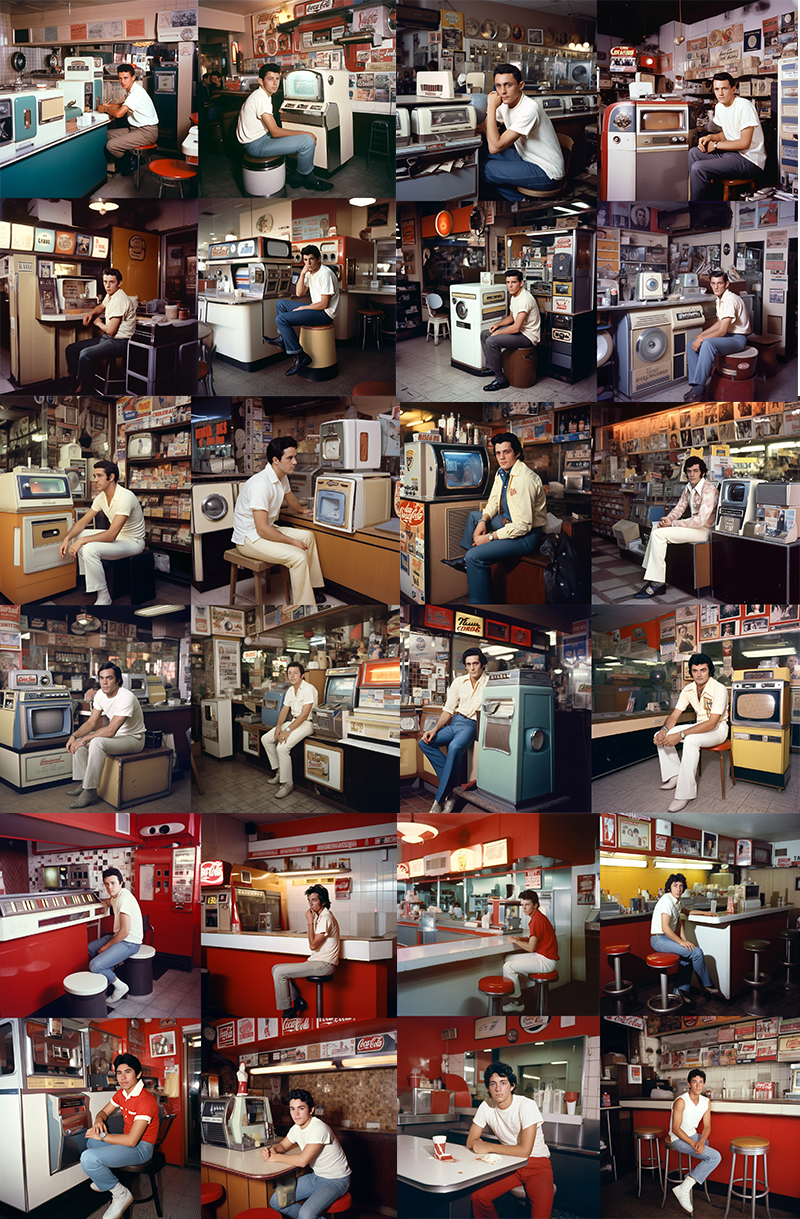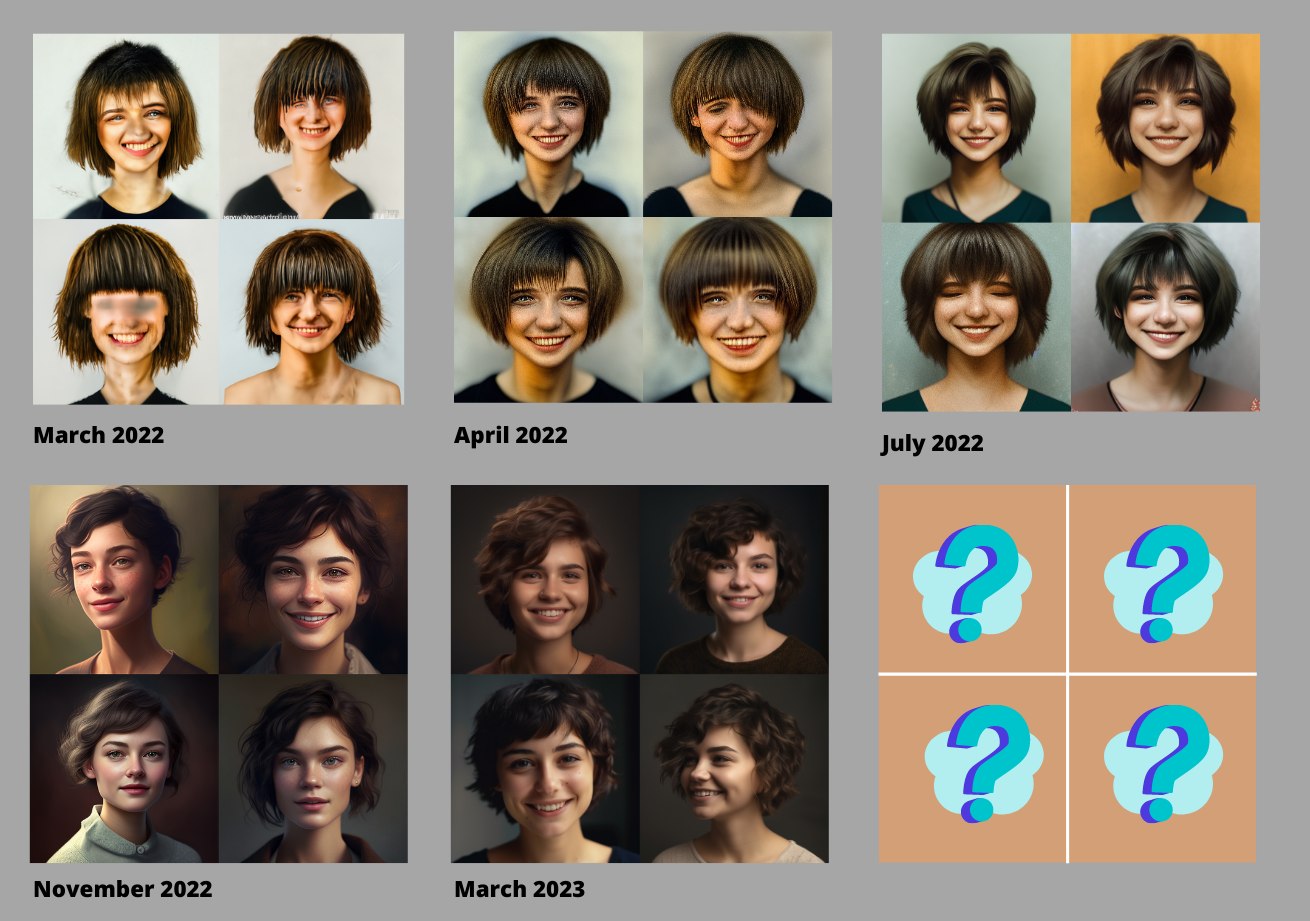Maybe you may have seen a lot of headlines recently about artificial intelligence (AI) writing or art. Recently, I’ve seen things with both that are giving me pause. Today I want to share three things:
- Why artificial intelligence in creative work is compelling
- Why AI is likely to create a crisis in creative fields, and how it may affect you
- How to consider ways to thrive as a creator as these changes happen
If you are feeling you don’t understand or care for AI, I want to encourage you to read this post anyway. The speed of changes that I’m seeing are unlike anything I’ve ever experienced. I grew up as “the art kid,” all of my friends over the years were the “weirdo creators and performers,” my wife is an amazing artist, and I spend my days talking to writers. But in those 50 years, I don’t think I’ve seen anything else that will potentially change the creative world as completely or rapidly as AI.
Okay, let’s dig in…
Why AI Writing and Art Is So Compelling
I know many writers and artists dismiss AI outright, saying things like, “Oh, I would never read a book written by AI.” Or “AI art is unethical, it is a machine stealing from artists.” Or “I prefer work that is crafted by a human being with a heart.” Now, these statements resonate with me. But recently a popular AI writing program called ChatGPT released a new version, as did an AI art program called Midjourney. The writing and art coming out of them is not just astounding, but already changing how creators work:
- Author Hugh Howey shared an example where AI was asked to make an argument in the style of his writing. His conclusion: “AI writes better than me. It nails the argument I would have made.” If you aren’t familiar with Hugh, he has had incredible success with his novels, which are now being turned into TV series.
- Set designer Gary McCann shared some images he created with an AI art generator, saying “Midjourney is revolutionizing my job as a set designer.” I looked him up, his credentials as a set and costume designer for opera and musicals are inspiring.
- I saw someone ask a writing AI to create a prompt for multiple sneaker campaigns, and then the person put that prompt into an AI art program. Within minutes, this person had created ad copy and images for an entire sneaker campaign. They called it “fully automated advertising.” If I showed you 10 ad campaigns for sneakers, and asked you to identify which one was created by AI, you likely would not be able to tell.
- A professor at The Wharton School used AI to get unstuck in the writing process. He gave it a piece of his writing and asked it: “Give me 10 different ways to finish this paragraph.” He even said: “The answers don’t even have to be good to help. Just getting something is often enough to overcome the tyranny of the blank page.”
To my surprise, two of my clients already started using AI in our work together! One used it to get ideas for writing their mission statement. They input a bio we created together, then used AI to get ideas in summarizing that to a single line. Another client used AI to help create a description of their ideal reader, and they were really happy with the results, noting how AI added in some details that weren’t in their original prompt, but added more realistic depth to the person they were describing.
The decisions we make about engaging with AI will likely not be as simple as “AI vs no AI,” or “I would never read an AI-written book.” Chances are, very soon, AI may be part of how someone writes or edits a book in ways that you would never know. In the same way that some email service providers make suggestions as you write email, or how spell check auto-corrects words for you. These tools may become a more nuanced part of a larger human-driven creative process.
I made casual mention above of how impressive the work coming out of AI is. I’m going to share photos in this post instead of writing because it’s easier to illustrate what I mean more quickly. I’m seeing thousands of examples online, but here is a simple one. I wanted to see if I could recreate a similar photo based on a real one. Below on the left is a real photo from inside a pizza shop at 191 East Houston Street in New York, in 1965. The man in the photo is named Salvatore Bartolomeo, and he was 18 years old at the time. On the right is an AI generated photo that was created after I put in some prompts to try to create something with a similar vibe:

Is the AI generated photo exactly like the original? Nope. Are there some details in the AI generated photo that aren’t accurate? Sure. But it’s worth noting that it gets a lot right, the person looks pretty realistic to me, and it took mere seconds to create. I did modify the final image a bit: I added some digital noise to give it more film grain, and I blurred it a bit because the original photo I was mimicking is so blurry. But here’s the thing, in just a few seconds, the AI also created many other possible images, as I honed the prompts to get something more like what I wanted:

By just playing with these AI art and writing generators, I’m becoming more aware of their myriad of uses, and they are surprising me again and again in unexpected ways. Is it a good thing that these AI generators exist? I don’t know. But I know they do exist, and that they are rapidly being infused into all kinds of technology and processes.
I was listening to a professional photographer the other day who was reminiscing about how many in the photography world scoffed at the notion of digital photography back in the year 2000. Now, except for a hobbyist community, most photos are digital photos. We don’t even question it anymore. And as someone who does still shoot on film every now and again, I can tell you that film is both AMAZING, but also a more laborious and expensive process compared to digital. Today, we don’t even consider the photos we take to be “digital photos.” They are just “photos.”
One user of Midjourney shared how much AI art has evolved in the past year, by sharing results from the same prompt through each version of the program. Just consider if this is the progress within a year, how much better will it be a year from now? Or five years from now?

Why AI May Create a Crisis in Many Creative Fields
It’s not difficult to imagine in the near future, someone who needs a photo of someone in a mid-century diner for a campaign of some sort, now just using AI to create the photo, or to at least ideate what the final image should look like. Just look at the images above. When you can generate such variety so quickly, one can ask who gets cut out in this process: a creative team that is sourcing reference material, a set designer, set builders, lighting specialists, models, costume designers, digital editors, and more. Now, that doesn’t mean these people will get cut out of the process, but their roles may change.
Looking at the wide range of images people are creating through AI, I began wondering: I saw that someone had created a bunch of very realistic AI-generated images of “people at a 1960’s music festival.” The image looked very real. How long will it be before the internet has more fake images of AI-generated photos of people at a 1960’s music festival, than real images? How will we be able to tell without detailed sourcing information? And of course: how will this change our perception of real events from the past?
Which brings us to the crisis that many creators are worried about now: that inner fear that what already felt like a difficult field to succeed in (writing, art, photography, illustration, etc.) will now be more crowded, and therefore, even more difficult to find success in. An illustrator in the year 2022 may feel that there are hundreds of people in their specific niche, and thousands of others vying for attention in illustration in general. It’s hard to stand out and catch a break that leads to opportunities or attention.
But what may that look like in 2024? Or 2028? When now people can create thousands upon thousands of AI-generated images each day. Is it human? Nope. Is it stealing? Maybe. But is it happening? Definitely.
And there will be a new generation of creators who thrive because of AI. I saw a guy on Instagram (of course, now I can’t remember his name) who now has hundreds of thousands of followers who are loving his AI-generated images. He was already an artist before AI, but when you compare the feedback he received before and after his AI images, it is night and day. He is taking his already existing artistic skill, and now using AI to enhance it. And his fanbase has grown exponentially because of it.
All of this, to me, sparks the imagination. Is ultra realistic AI-generated video next? Or what about AI-generated animation? How will this discourage some people from entering creative fields? Or encourage others to start creating who wouldn’t feel it is accessible without AI? Perhaps in the same way that 30 years ago, a person might not have entered into the field of photography because the tools and film processing were expensive, but today they would enter the field because the wonderful cameras in their phones allowed them to become very good hobbyists before deciding to make it a profession.
Honestly, the crisis I’m worried most of is the psychological and emotional crisis that AI may create within writers, artists, and creators. That it will enhance their doubts about the possibility of their creative work finding an audience. Or the idea that the marketplace is so crowded, that they shouldn’t bother. Or the new technology is so complicated, that they will never understand it or catch up. Or that everything in the arts today is so… unfamiliar… that they just choose to sit out.
I do the work I do believe I believe deeply in the power of creative work to change our lives for the better. I am infinitely inspired by those who create. When I consider all the possible outcomes AI may have on our world, what I worry about most is not a dystopian future where AI takes over the world. I worry about someone sitting alone in their home, feeling they have something to create and share, but not doing so.
As you navigate your creative work moving forward, I just want to encourage you to not allow any changes in the marketplace to make you stop. To not have all of this add stress to the process.
How to Thrive as a Writer/Artist/Creator Amidst These Changes
If these changes are so big, what can one individual writer or artist do to feel they are growing amidst these massive shifts? Quite a lot, I think. So here is what I have been doing personally, and what may be useful for you:
- I’m doubling down on human connections. People are hardwired to respond to faces, voices, and human emotions. I mean, I’ve never heard so many friends say they cried watching the Academy Awards as I have this year, because of how touching and emotional the speeches were from the many winners from the cast of Everything Everywhere All At Once. The power of that human connection won’t change.
- I feel human-centered marketing is more relevant than ever when you consider how you share what you create. People want to hear the backstory of how something is made, and how that work comes from a deeply human place. Embrace that.
- I’m keeping an open mind when it comes to AI. I’m trying not to dismiss it outright, embrace it outright, or get caught up in a singular view of it. I think with AI, multiple things can be true at once. It’s entirely possible that AI is “stealing from artists” and also “creating new tools for artists.”
- I’m experimenting with AI tools in small ways. I’ve never considered myself an early adopter, but I’ve been playing with Midjourney and ChatGPT, and looking at experiments others are doing. I’ll get a random idea, then try it out, and learn something. I want to encourage you to not just rely on pithy examples created by others, such as: “Oh, I saw someone ask ChatGPT to write a poem, and it was horrible. I’m not worried.” Try it yourself.
- I’m listening to others who are using these tools. There are plenty in the Facebook Group for Midjourney and creators on Twitter who are sharing lots of compelling examples of uses of AI for creators, as well as powerful warnings.
- I’m considering where in a creative workflow these tools could become useful, even in small ways. As someone who collects typewriters, I love old fashioned-things that were used in the creative process. But that doesn’t mean it isn’t worth considering how AI could be useful for some aspects of ideation in the creative process.
- I’m also embracing traditional tools of craft. Writing in a basic text document, pen and paper, typewriters, film cameras, acoustic guitars, and many tools of arts and crafts.
You get to choose the path you take. And it’s worth noting that I can’t predict the future, and there is more that I don’t know about AI generated art and writing, than what I do know. So this analysis above could be wildly incomplete, inaccurate, and could even be moot in a few days time when things change yet again. But then, isn’t that the practice of being someone who creates? To try to match the world that is in your heart and mind with the world that actually exists outside our front door? The work you create becomes the gateway that opens up new ideas and stories for those who are moved by your work.
Thanks!
